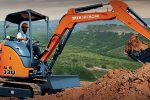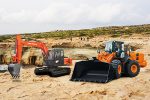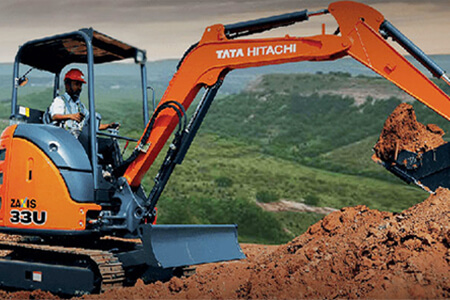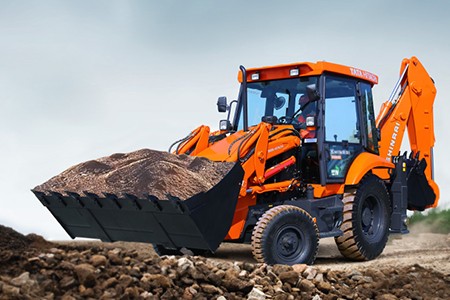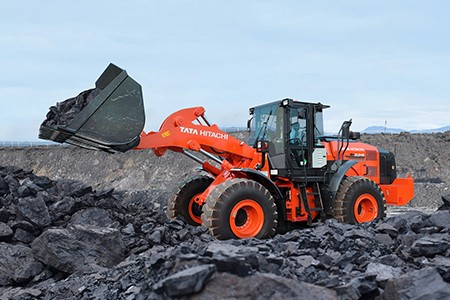Wheel Loader vs Backhoe Loader: Understanding the Differences and Choosing the Right Equipment
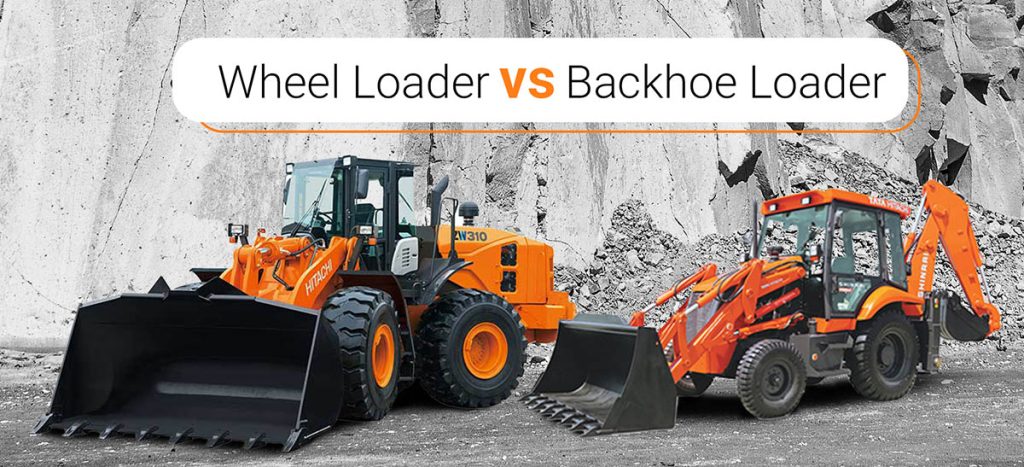
Regarding heavy equipment for construction and earthmoving tasks, the wheel loader and the backhoe loader are two commonly used machines. Both these machines serve distinct purposes and excel in different situations. This blog will briefly overview each piece of equipment and detail their differences. By the end, you will clearly understand which equipment suits various scenarios.
WHEEL LOADER
A wheel loader, or a front loader or bucket loader, is a powerful machine designed for loading, carrying, and dumping materials. It features a large front-mounted bucket that can be raised and lowered using hydraulic arms. The machine moves on large, sturdy wheels, traversing different terrains easily. The operating weight of wheel loaders at Tata Hitachi ranges from 10,980 Kg to 45,960 KG.

The Key Features of a Wheel Loader are:
- Robust lifting capacity: Wheel loaders have impressive lifting capacities, allowing them to handle heavy loads efficiently.
- Versatility: The front-mounted bucket can be replaced with various bucket options, making the wheel loader adaptable to different tasks.
- Enhanced maneuverability: Its ability to rotate in a tight radius makes it ideal for construction sites and material handling yards.
BACKHOE LOADER
A backhoe loader is a versatile machine that combines the capabilities of a wheel loader and a backhoe. It consists of a tractor-like unit with a front-mounted bucket and a rear-mounted backhoe attachment. The front bucket handles loading and material transportation, while the backhoe is used for digging, excavating, and trenching operations. The operating weight of these machines that Tata Hitachi provides ranges from 7,940 Kg to over 8,770 Kg. The key features of a Backhoe Loader are:

- Dual functionality: The backhoe loader offers the advantage of both a front and backhoe, eliminating the need for two separate machines at the worksite.
- Excavation capabilities: The backhoe attachment at the rear allows for precise digging, trenching, and excavation tasks, making it highly suitable for utility work and construction projects.
- Attachment Compatibility: Backhoe loaders frequently have attachment compatibility with various tools, including augers, hydraulic hammers, grapples, etc. The operator may complete a larger range of operations using a single piece of equipment because of its adaptability.
DIFFERENCES BETWEEN WHEEL LOADERS AND BACKHOE LOADERS:
-
Primary Function:
The primary function of a wheel loader is material handling. It is designed for loading, carrying, and dumping various materials such as soil, gravel, sand, or debris. With its front-mounted bucket, a wheel loader excels at scooping and transporting heavy loads efficiently. On the other hand, a backhoe loader serves a dual purpose. It functions as a loader for material handling tasks, similar to a wheel loader, but also features a rear-mounted backhoe attachment. This backhoe attachment enables the machine to perform precision digging, excavation, and trenching operations.
-
Attachments:
Wheel loaders only provide a few different attachments. They may have a limited variety of attachment choices, like different bucket sizes or hydraulic rock crushers, even though they normally have a front bucket as their primary attachment. Due to the variety of available attachments, backhoe loaders are renowned for their adaptability. Attachments like rock breakers, orange peel grab, clamshells, magnets, slurry pumps, drum cutters, crushers, hedge trimmers, and mulchers can be easily attached. This increases the utility of backhoe loaders on construction sites, material handling yards, and other job sites by enabling them to adapt to various jobs and industries.
-
Digging Depth:
While wheel loaders are highly efficient in material handling tasks, they are not designed for digging or excavation. The front-mounted bucket of a wheel loader is not optimised for digging or trenching operations. In contrast, backhoe loaders offer significant digging depth with their backhoe attachment. The backhoe arm can reach deeper into the ground, allowing for precise digging, trenching, and excavation tasks. This makes backhoe loaders an excellent choice for utility work, construction projects, or any application that requires extensive digging.
MAKING A CHOICE BETWEEN A WHEEL LOADER AND A BACKHOE LOADER
Wheel Loader:
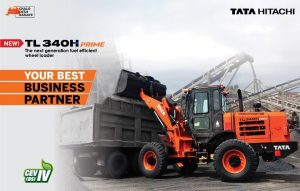
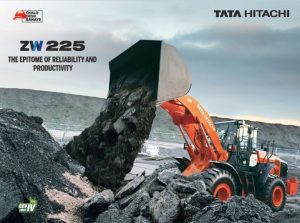
A wheel loader is suitable for heavy material handling tasks such as loading, carrying, and transporting materials like soil, gravel, or debris. It is ideal for construction sites, mining sites, material handling yards, RMC (Ready-mixed Concrete), and farming, where the primary focus is on efficiently loading and transporting heavy loads. The versatility of wheel loaders, with their various attachment options, makes them suitable for tasks such as Crusher, lifting pallets, or handling logs. Their exceptional maneuverability enables them to navigate through construction sites easily.
Backhoe Loader:
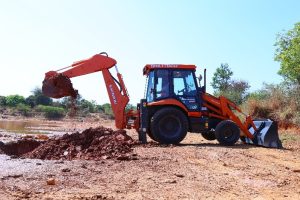
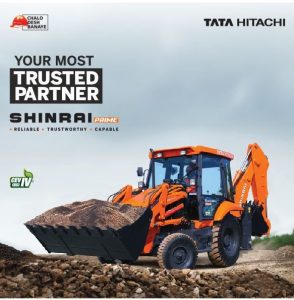
A backhoe loader is best suited for situations requiring material handling and excavation capabilities. It is a versatile machine that combines the functions of a loader and a backhoe. Backhoe loaders are particularly useful for excavation, digging, levelling, loading and trenching tasks, making them valuable in utility work, construction projects, agriculture and landscaping. Backhoe loaders are a practical choice when the project requires precise digging, excavation depth, and the ability to perform loading tasks simultaneously. Choosing between a wheel loader and a backhoe loader depends on specific requirements and the intended use. Assessing the specific needs, considering the operational requirements, and evaluating the pros and cons of each machine will help you make an informed decision that aligns with the project requirements and maximizes efficiency.
Recent Articles
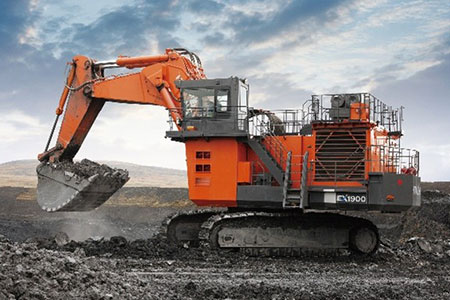
September 10, 2024.
A Comprehensive Guide to Mining Excavators by Tata Hitachi
A Comprehensive Guide to Mining Excavators by Tata Hitachi Having reliable and efficient equipment is essential for maximising productivity andContinue Reading
Read more →
March 28, 2024.
Unearthing the Power of Excavators: A Comprehensive Guide to Types and Applications
Excavator: Types, Specifications, Uses in Construction Site Excavators have revolutionized the construction and mining industries, providing unparalleled efficiency in earthmoving,Continue Reading
Read more →
March 28, 2024.
Enhancing Excavator Efficiency: A Comprehensive Guide to Excavator Attachments
Different Types of Excavator Attachments and Their Uses Excavators are strong equipment used extensively in building, mining, and other sectorsContinue Reading
Read more →
